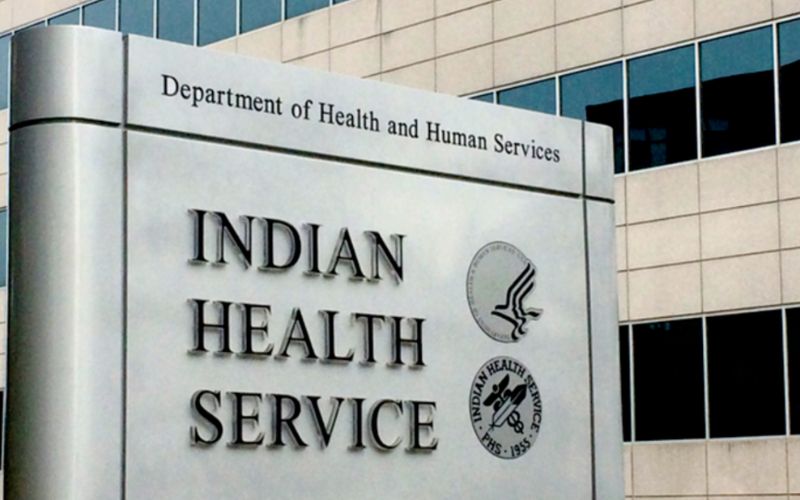
- Details
- By Levi Rickert
On Friday, May 30, the Trump Administration released the Fiscal Year (FY) 2026 President’s Budget, including the Department of Health and Human Services (HHS) Budget in Brief.
The budget outlines key funding proposals and policy priorities for American Indian and Alaska Native communities, emphasizing the federal government’s trust responsibility to Tribal nations. While it includes some funding increases, Tribal health advocates are raising concerns over flat funding and proposed cuts to key programs.
Absent from the budget is the provision to provide Advance appropriations for Indian Health Service (IHS). Advance appropriations are a way to ensure IHS has consistent funding, even if there are delays in the annual appropriations process. This is provisions important because IHS is the only federal healthcare provider without a guaranteed funding stream from year to year.
Key Funding Proposals for Indian Health
The FY 2026 budget proposes $8.1 billion for the Indian Health Service (IHS), including level funding for urban Indian health programs. The funding reflects a modest increase compared to FY 2025, though most of the additional funds come from mandatory Contract Support Costs and Tribal lease payments under section 105(l). Core service line items, such as hospital and health clinics, remain largely flat.
A significant $84 million shift from IHS Facilities to Services aims to support operations at newly opened health facilities. Other specific increases include:
- $5 million for Dental Services
- $1 million for Mental Health Services
- $6 million for Purchased/Referred Care (PRC)
However, this increase comes at a cost. Sanitation Facilities Construction was slashed by 87%, and most other IHS Facilities line-items saw no meaningful change.
New Behavioral Health Program and SDPI Reauthorization
The HHS budget introduces $80 million for a new Native American Behavioral Health and Substance Use Disorder Program, first authorized in 2022. The program aims to support culturally tailored approaches to mental health and addiction in Indian Country.
Additionally, the Special Diabetes Program for Indians (SDPI) is reauthorized at current levels, despite the Administration proposing a slight funding decrease.
Policy Commitments and Program Shifts
HHS underscores its commitment to Tribal sovereignty and self-governance, stating its support for the rights of all 574 federally recognized Tribes. The budget document highlights efforts to:
- Recognize Tribal health data and jurisdiction
- Support Tribal public health infrastructure
- Preserve CMS Tribal outreach and education activities
Yet, the budget also proposes substantial reorganizations and eliminations of Tribal-specific programs:
- Termination or relocation of the CDC Healthy Tribes Program
- Proposed cuts to SAMHSA’s Tribal Behavioral Health and Opioid Response Grants
- Transfer of Native Elder Services and Nutritional Supports from the Administration for Community Living (ACL) to the Administration for Children and Families (ACF)
Broader HHS Cuts Impact Tribal Health
Across HHS, several major agencies face steep cuts:
- National Institutes of Health (NIH): -$17 billion
- Administration for a Healthy American: -$6 billion
- Administration for Children, Families, and Communities: -$7 billion
These reductions may have indirect effects on Tribal health access, research, and family services.
What’s Next
The proposed budget marks the beginning of the FY 2026 appropriations process. It will now be reviewed by Congress, where the House and Senate Appropriations Committees will make final funding decisions through summer markups.
The National Indian Health Board (NIHB) and other advocacy organizations are mobilizing to push for:
- Advance appropriations for IHS
- Increased funding for essential Tribal health programs
- Preservation of specialized Tribal initiatives
The FY 2026 HHS Budget signals both promising new investments and troubling potential rollbacks in Tribal health funding. While the proposed $8.1 billion for IHS and new behavioral health funds are steps forward, flat funding, severe cuts to facility infrastructure, and program terminations underscore the need for continued Tribal advocacy in the federal budget process.
More Stories Like This
‘A good stew is a story’ Blackfeet buffalo rancher shares Three Sisters Buffalo Stew recipeNational Indian Health Board Urges Congress to Extend Enhanced Premium Tax Credits
$1.25 Million Grant Gives Hope to Tolowa Dee-ni' Nation Amid Housing Crisis
HHS Repeals Nursing Home Staffing Requirements, Citing Relief for Tribal Facilities
Native Americans Face Second-Highest Gun Death Rate in U.S., New Study Shows

